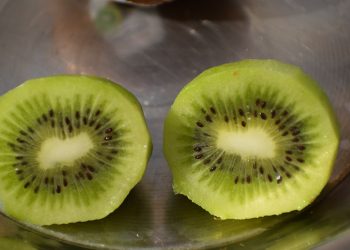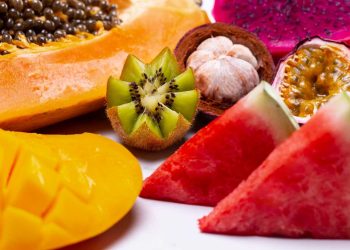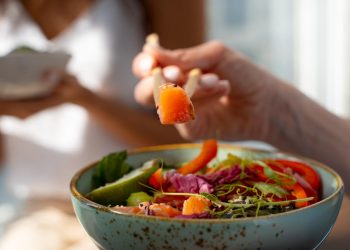Tendon collagen foods are the simple, powerful choices you can put on your plate to help rebuild and protect the tendons that carry you through life. Tendons are the tough cords that anchor muscle to bone. When they’re strong, you move with confidence. When they’re weak or inflamed, everything from your morning walk to your favorite hobby feels risky.
You care about this because tendon pain is stubborn and slow to heal. Science shows that nutrition matters for tendon repair, not just rest and physical therapy. That means what you eat—real, targeted foods—can speed recovery and lower the chance of reinjury.
Contents
- Tendon Collagen Foods You Need To Know
- 1. Bone Broth And Slow-Brewed Stocks
- 2. Collagen-Rich Meats And Offal
- 3. Fatty Fish And Fish Skin
- 4. Citrus, Berries, And Vitamin C-Rich Produce
- 5. Gelatin, Jello, And Hydrolyzed Collagen Powders
- 6. Legumes, Nuts, And Seeds For Amino Acid Balance
- 7. Dairy, Eggs, And Fermented Proteins
- How To Combine These Foods For Maximum Impact
- Practical Meal Ideas And Quick Recipes
- Supplements Versus Food: What To Choose
- Lifestyle Habits That Amplify Food Benefits
- Putting It Together: A Sample Day For Tendon Health
- Signs You’re Feeding Tendon Recovery Well
- Bottom Line
- FAQ
Tendon Collagen Foods You Need To Know
Let’s be direct: some foods are scaffolding for healing. They provide the amino acids, vitamin cofactors, and anti-inflammatory compounds that tendons crave. Clinical studies on collagen and tendon recovery highlight the role of specific nutrients, and sports medicine clinics increasingly recommend food-first strategies alongside rehab. If you want resilience in your joints and tendons, these choices matter.
When you focus on tendon collagen foods you aren’t chasing a fad. You’re choosing ingredients that supply glycine, proline, hydroxyproline, vitamin C, and gelatinous proteins that feed tendon tissue. Those are the building blocks your body uses to recreate strong, flexible tendon fibers.
1. Bone Broth And Slow-Brewed Stocks
Bone broth is the easiest way to get gelatin, collagen peptides, and minerals into your diet. Simmer bones for 12–24 hours with a splash of vinegar to extract collagen-rich gelatin.
Bone broth is a powerhouse after surgery or chronic tendon strain. The gelatin provides amino acids directly tied to tendon matrix formation and it’s easy on a tender digestive system.
2. Collagen-Rich Meats And Offal
Slow-cooked beef shank, pork hocks, and chicken feet are collagen-dense. These cuts often get overlooked in favor of leaner meats—but they contain the connective tissues that become tendon-friendly protein once cooked down.
Include a portion a couple times a week. Your body repurposes those proteins into tendon repair materials faster than it will from muscle-only cuts.
3. Fatty Fish And Fish Skin
Salmon, mackerel, and sardines bring omega-3 fats plus collagen in their skin. Omega-3s reduce tendon inflammation and support healing signaling.
Grill the skin crisp. Eat it. The combined protein and anti-inflammatory fat is a two-way boost that every recovery plan should consider.
4. Citrus, Berries, And Vitamin C-Rich Produce
Vitamin C is non-negotiable for collagen synthesis. Oranges, strawberries, kiwifruit, and red peppers supply the cofactor your body needs to stitch collagen strands together.
You’ll see better collagen quality when vitamin C is present. Sprinkle berries on yogurt, squeeze lemon on broth, add peppers to salads—small habits, big payoff.
5. Gelatin, Jello, And Hydrolyzed Collagen Powders
Gelatin and hydrolyzed collagen powders dissolve into hot drinks and recipes. Research indicates that collagen supplements combined with vitamin C can improve tendon properties and reduce pain for some people undergoing rehab.
If you choose powders, look for grass-fed or sustainably sourced options. Mix them into coffee, soups, or smoothies for an effortless tendon boost.
6. Legumes, Nuts, And Seeds For Amino Acid Balance
Lentils, chickpeas, almonds, and pumpkin seeds deliver arginine, lysine, and other amino acids that support tissue repair. They also carry zinc and magnesium—cofactors in cell regeneration.
Use these as snacks and meal anchors. They sustain the building-block supply between collagen-rich meals.
7. Dairy, Eggs, And Fermented Proteins
Eggs and full-fat dairy deliver complete proteins and vitamin A, which support tissue remodeling. Fermented products like yogurt add gut-friendly bacteria, aiding nutrient absorption and calming chronic inflammatory signals that can stall tendon repair.
A breakfast of eggs with a side of Greek yogurt and berries is an anti-inflammatory, collagen-supporting statement.
How To Combine These Foods For Maximum Impact
Think of tendon collagen foods in pairs: collagen protein plus vitamin C, and an anti-inflammatory fat. For example:
- Bone broth soup with lemon and salmon flakes.
- Collagen powder stirred into a berry smoothie with spinach.
- Slow-cooked beef shank served with a citrusy pepper salad.
These combos create the biochemical environment your body needs to rebuild tendon matrix efficiently. Research on nutrient synergy supports pairing collagen precursors with vitamin C for better outcomes.
Practical Meal Ideas And Quick Recipes
You don’t need a loft kitchen or a cookbook to do this right. Try these simple ideas:
- Morning collagen latte: coffee, a scoop of hydrolyzed collagen, and a splash of orange juice on the side.
- Midday bowl: lentils, roasted salmon skin, roasted peppers, and a squeeze of lemon.
- Evening comfort: bone-broth stew with diced root vegetables and chunks of collagen-rich meat.
Small changes add up. When tendon collagen foods become the habit, recovery becomes less of a struggle and more of a steady process.
Supplements Versus Food: What To Choose
Supplements can help—but they’re not a replacement for food. Hydrolyzed collagen powders can raise circulating amino acids quickly, which is useful around rehab sessions. However, whole foods deliver cofactors, fiber, and broader nutrition that supplements can’t match.
If you supplement, pair it with a vitamin C-rich snack. If you prefer food-first, prioritize the seven tendon collagen foods listed and make them regular.
Lifestyle Habits That Amplify Food Benefits
Nutrition is essential, but it doesn’t work alone. Sleep, progressive loading exercises, and proper hydration make your food investments pay off. Avoid smoking and excess alcohol; both blunt collagen synthesis and slow healing.
Work with a physical therapist or sports medicine clinician to match your exercise load to your healing stage. Proper rehab plus tendon collagen foods equals predictable progress.
Putting It Together: A Sample Day For Tendon Health
Here’s a practical 24-hour plan that centers tendon collagen foods:
- Breakfast: scrambled eggs, Greek yogurt with berries and a scoop of collagen powder.
- Lunch: lentil salad with canned salmon (with skin) and a citrus vinaigrette.
- Snack: handful of almonds and an orange.
- Dinner: slow-simmered bone broth stew with beef shank and steamed peppers.
This pattern gives steady amino acids, vitamin C, omega-3s, and anti-inflammatory support—everything tendons ask for.
Signs You’re Feeding Tendon Recovery Well
You’ll know you’re on the right track when pain drops, mobility improves, and strength comes back in incremental, steady steps. Clinicians monitor function as much as pain scores; improvements in range of motion and load tolerance mean your food strategy is working.
If pain worsens or you have new swelling, see your provider. Nutrition supports healing, but it doesn’t replace professional assessment.
Bottom Line
Bottom Line
You don’t need magic pills to rebuild resilient tendons. You need targeted, real tendon collagen foods—bone broth, collagen-rich meats, fatty fish, vitamin C-packed produce, gelatin, legumes, and whole proteins—combined with smart rehab and rest. Those choices give the amino acids, cofactors, and anti-inflammatory support that tendons need to recover and stay strong.
Start simple. Pick two foods from the list and make them regular this week. Your tendons will thank you.
FAQ
What Are The Best Foods To Promote Tendon Healing?
The best foods are those rich in collagen precursors and vitamin C: bone broth, collagen-containing meats, fish skin, citrus fruits, berries, gelatin, legumes, and eggs. Pairing collagen with vitamin C supports the biochemical steps of repair.
Can I Rely On Supplements Instead Of Food?
Supplements can be helpful, especially around rehab sessions, but they work best when paired with a nutrient-rich diet. Whole foods provide additional cofactors and anti-inflammatory compounds that supplements lack.
How Long Until I See Results From Changing My Diet?
Tendon healing is slow. You may notice pain reduction in weeks, but meaningful structural improvements take months. Consistency with tendon collagen foods and progressive loading yields the best long-term outcomes.
Are There Any Risks To Eating These Foods?
Most tendon-supportive foods are safe for healthy people. If you have kidney disease, gout, food allergies, or dietary restrictions, consult your clinician or dietitian to tailor choices safely.
— — —
References
National Institutes of Health provides an overview of collagen and its role in connective tissue and healing (http://www.ncbi.nlm.nih.gov/pmc/articles/PMC4005077/).
Harvard Health discusses the importance of vitamin C for collagen formation and wound healing (http://www.health.harvard.edu/staying-healthy/vitamin-c-and-healing).
Mayo Clinic offers guidance on nutrition and tendon health as part of musculoskeletal recovery (http://www.mayoclinic.org/healthy-lifestyle/nutrition-and-healthy-eating).
Cleveland Clinic provides patient-centered information on tendon injuries and rehabilitation strategies (http://www.clevelandclinic.org/health/tendons).
British Journal of Sports Medicine has published research on collagen supplementation and tendon outcomes (http://www.bjsm.bmj.com/content/early/2017/01/24/bjsports-2016-097057).
Get Your FREE Natural Health Guide!
Subscribe now and receive our exclusive ebook packed with natural health tips, practical wellness advice, and easy lifestyle changes — delivered straight to your inbox.















